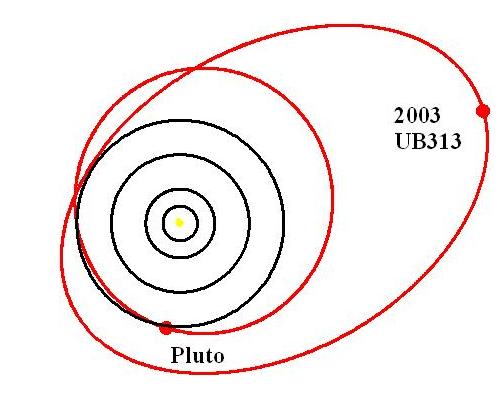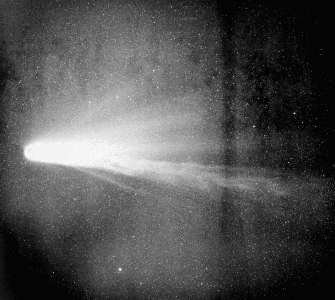
Pluto and its moon, Charon are basically large balls of frozen gas. Because of their location, they are currently regarded as large, but not particularly unusual, Kuiper Belt objects.
Charon is about half the size of Pluto and is only very slightly larger than the next largest Kuiper belt object Varuna.
New Kuiper belt objects are being discovered at a rapid pace. Quaoar and Sedna are smaller than Pluto but larger than its moon Charon. An object, 2004 XR 190, nicknamed "Buffy" has a circular, but highly inclined orbit at 50 au --- far beyond Pluto and Neptune. The Kuiper Belt object, now known as Eris, is actually larger than Pluto and has a moon of its own (named "Dysnomia"), so Pluto has lost its status as the largest object in the Kuiper Belt and is no longer regarded as a planet at all.
 Eris used to be called "2003UB313".
Eris used to be called "2003UB313".

Haley's Comet is the best known periodic comet. It returns every 75 years. This picture was taken during its 1986 visit. It will be back in 2061. However, its steeply inclined orbit indicates that it may not actually be a former resident of the Kuiper Belt.
Some Kuiper Belt objects have wandered into the space between Jupiter and Neptune. Nine of these are known, including Chiron, an object 170km in diameter. These objects are called centaurs.
The Kuiper Belt Homepage More than you ever wanted to know.